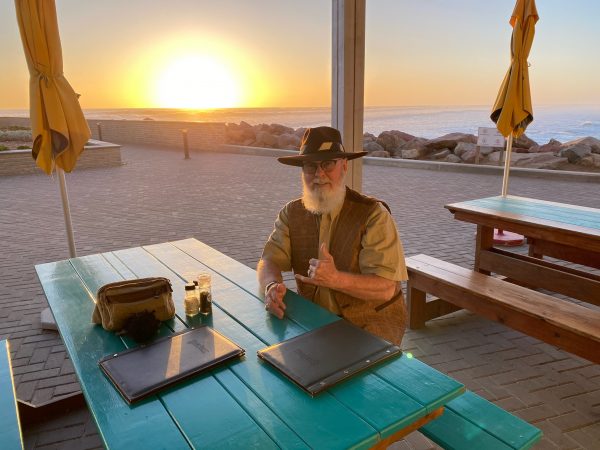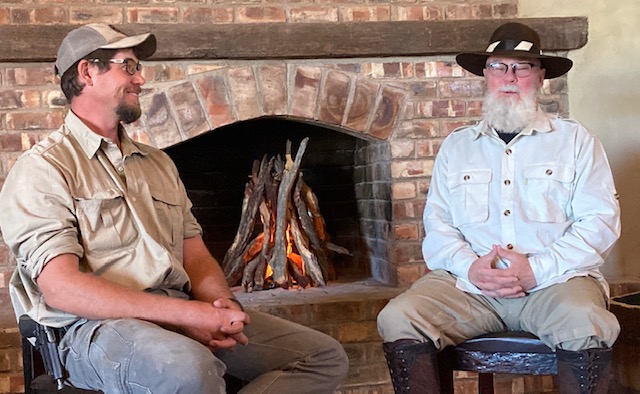THE QUEST TO SAVE one of the last living dinosaurs – the African Rhinoceros
South Carolina-based explorer makes the case for the quest
By Dr. Tom Mullikin
CAMDEN, S.C. – The civilized world which professes its concern for the environment and all living creatures seems to be sitting back as the last of the dinosaurs are killed to extinction? This isn’t Jurassic Park: This is sub-Saharan Africa, specifically Namibia. Tragically, studies have demonstrated that approximately one rhino is killed/poached every 16 hours, and that poaching in Namibia has almost doubled in the last year. In South Africa the poaching/illegal killing of rhinos has increased in recent years by a reported 9000 percent according to an article published by the American Academy of Political and Social Science (Situational crime prevention and the ecological regulation of green crime: A review and discussion, August 20, 2018).
The world sits on the precipice of the extinction of an animal that has roamed the earth for 60-million-years – essentially the last of the living dinosaurs.
The illegal killing of two of the African rhinoceros species (the white rhino Ceratotherium simum and black rhino Diceros bicornis) has increased dramatically concurrent with the heightened interest and financial ability of Asian countries to purchase for their believed medicinal value and wealth status of the horn.

A rhino horn is used with traditional Chinese medicine practices. The horns are crushed to a powder and ingested as a treatment-means for everything from fever to cancer.
Increasingly, rhino horns have also become status symbols of wealth in Vietnam and other Asian nations. Poaching terrorists now utilize sophisticated military grade equipment to track and kill rhinos. These rhino terrorists are heavily armed and pose extremely dangerous threats to local farmers and host communities.
As one of Africa’s BIG FIVE, rhinos are a popular attraction for many African tourists who want to experience first-hand these historic animals.
Ecotourism can be an important source of income for local communities. Ecotourism is the fastest growing area of tourism (which is a $6-trillion industry worldwide). Studies, like that which was published by Timothy C. Haas and Sam M. Ferreira (Combating Rhino Horn Trafficking: The Need to Disrupt Criminal Networks, 2016) have shown that African rhinos could become extinct in the wild by the year 2036, further injuring the animals and host communities who could benefit from increased ecotourism. Unfortunately as populations of rhinos decline, the price on the black market for rhino horn increases.
Sophisticated terrorist poaching operations have been engaged in Africa, significantly reducing the number and survivability of rhinos. Rhino horns are “extremely valuable on the black market, being sold for between US $30,000 and US $65,000 per kg in Vietnam, thereby being worth more than gold, heroin or cocaine,” according to an article published by the National Institutes of Health in 2020.
The horns are smuggled in large quantities primarily to Southeast and East Asia, where they are processed into products that function as status symbols and traditional medicines. There are answers however which could save the species. Rhino horns are made up of keratin: The same substance of which human fingernails and toenails are composed. Thus the horn can grow back after being trimmed and sold without harm or injury to the animal.
The killing of this historic species purely for the commercial sale of its horn is a disgusting, wanton, and criminal waste.
I recently joined Alex Oelofse at Mt. Etjo whose family’s name is synonymous with conservation and the protection of many species of African wildlife. Alex’s father is the world-renowned conservationist Jan Oelofse who invented the Oelofse method of capture and release.
I was honored to first meet and spend time with Jan in 1989. His heroic actions to save species of wildlife caught the attention of the world and became the subject of the John Wayne movie, ‘Hatari,’ wherein Jan played Wayne’s stunt double. Alex along with his mother Annette have taken up the mantle of protecting orphan rhinos and work to care, save, protect and conserve this wonderful and vulnerable, iconic species.
Alex and I are pictured here (he on the left, me on the right) relaxing in the Okonjati Wildlife Sanctuary: a wonderful conservation area. The historic lodge is named “Etjo” which means the place of refuge. Mount Etjo Safari Lodge played host to the signature of the most important document declaring Namibia’s Independence, the Mount Etjo Declaration, which was signed in 1989.
Interested in helping us find solutions to care for and protect this historic animal? Follow us as we work together to find a solution to these murderous and unnecessary killings of one of the last living dinosaurs. Check out all of Alex’s incredible work at https://www.mount-etjo.com/.
– Dr. Tom Mullikin is a S.C.-based energy-environmental attorney, retired military officer, university professor, and global expedition leader. Currently on an exploratory mission to the African continent, he will begin leading the fourth annual SC7 Expedition across South Carolina from the mountains to the sea in July.
